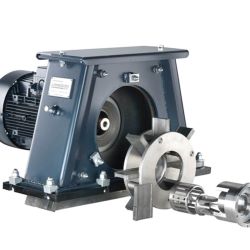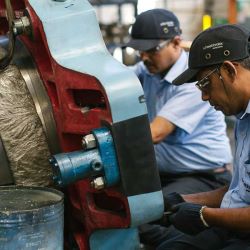Agricultural equipment manufacturer Amazone has purchased one of the first models of the new, lighter LBS mesh belt shot blast machines from Wheelabrator for its manufacturing facility in Mosonmagyaróvár, Hungary.
The facility makes mounted reversible ploughs in Amazone’s “Cayros” range, for which various steel components are shot blasted before assembly and coating.
The new LBS 1000-15.3-4/11 mesh belt shot blast machine replaces an older non-Wheelabrator blast machine. The new machine’s pitless construction facilitates speedy and flexible commissioning. Its trusted mesh belt concept allows the efficient, continuous blasting of parts from all sides within a relatively compact space and without tumbling.To achieve complete coverage and excellent blast results, blast wheels are arranged in an optimal position, inclined to face the belt direction.
Officially launched in April 2018, this new, lighter LBS mesh belt shot blast machine features a further optimised blast pattern as well as a more ergonomic loading height compared to previous versions. The LBS shot blast machine at Amazone has four highly efficient 11kW TITAN blast wheels and a belt height (loading height) of 1000mm. It can accommodate workpieces of up to 1000mm width and 500mm height.
For the project at Amazone, the standard version of the machine was equipped with an extended inlet and outlet area to handle longer workpieces. The head of operations at Amazone in Hungary comments: “Over the years and across our various production sites in Europe, we’ve had shot blast equipment from a range of manufacturers. Our colleagues in Russia had purchased a machine from Wheelabrator 2-3 years ago and recommended them to us on the basis of the very good experience they’ve had both with the machine and the service support offered by the Wheelabrator team.”
The new LBS mesh belt shot blast machine at Amazone was ordered in July 2017 and commissioned in December 2017.


